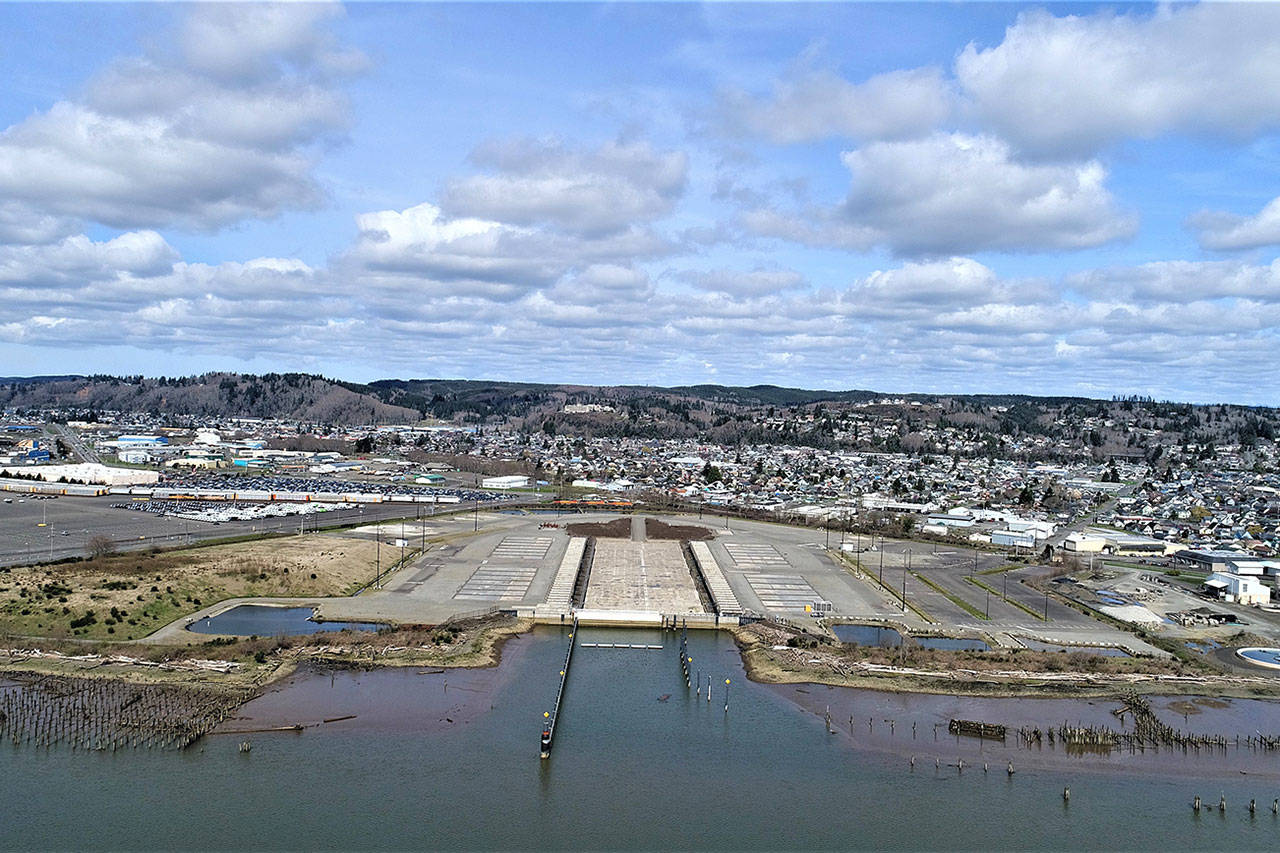A company under the control of Tim Quigg, whose family has been involved in the maritime business on Grays Harbor for decades, has entered a bid to purchase the state-owned Aberdeen property once used to build the massive pontoons for a floating bridge across Lake Washington.
His plans call for a facility that would do maintenance and repair on ocean-going barges and tugboats, although he would bring in another company to operate it, he said.
The bid, officially from Grays Harbor Shipyard LLC, recently formed by Quigg, is for a little more than $5 million and was entered earlier this week. The 54-acre property, which is between the Port of Grays Harbor and the Aberdeen Sewage Treatment plant, was used for several years to build the huge concrete pontoons, longer than a football field and three stories tall. The facility includes a large casting basin that could be filled with water so that the pontoons could be floated out for transport.
Quigg said most of barge maintenance work is now done in Canada and barge owners would like an alternative on the U.S. West Coast.
Quigg said his bid is contingent on a number of improvements that would be paid for by the state, and the granting of a number of permits. The permits, he said, might not be a tough hurdle because most of them were in place for the pontoon facility.
The list of improvements, however, would likely cost several million dollars more than Quigg’s bid, meaning the state would go in the hole to sell the property.
A state Department of Transportation representative involved in the state’s efforts to sell the property did not return phone messages.
The state built the facility for one purpose, to construct the pontoons. It was decommissioned in 2015 and sits unused. But economic development interests on Grays Harbor have always hoped that the expensive infrastructure would attract permanent industry and jobs when the state was through with it.
A state auction that ended in May drew no bids and the state Department of Transportation listed it for sale for $9.7 million, which was the minimum bid for the auction.
The Port of Grays Harbor has shown interest in the property, but back in May, Port Executive Director Gary Nelson said the $9.7 million price was too high.
The property holds a 900- by 200-foot casting basin in which the pontoons were constructed. The basin floor was made from 20,000 yards of concrete supported by more than 900 underground steel piles.
At the mouth of the basin, which is adjacent to the Chehalis River, is a three-piece, 150-ton gate that is 110 feet wide and 9 feet tall. When closed, the gate kept out the water so work could be done on the pontoons. When the gate was opened, water from the river would fill up the basin and the pontoons could be floated out.
Quigg said the gate system is too slow for the business he envisions, since barge owners don’t want their stock out of commission any longer than necessary. Quigg’s list of bid contingencies has several expensive demands, including dredging, removal of the gate and construction of a caisson system to replace it and pumps to get the water out more quickly.
Last year, the City of Aberdeen commissioned the firm of Nichols Marine Services to look at possibilities for the property.
The resulting study determined the value of the property was zero., but with a large enough investment, some maritime business could make money, the study concluded. The study said it would take up to $12.5 million to prepare it for uses such as ship building, ship repair or maintenance.
Quigg said the barge maintenance business is the property’s “highest and best use.” Regulations require that barges are taken out of the water periodically to be repainted and get general preventive maintenance and needed repairs. He says there aren’t enough yards offering the service and demand from barge owners is high.
Quigg now lives in Tacoma, but has stayed active in Grays Harbor business and social issues, particularly the issue of homelessness. Why take this project on? “Because this is one of the best marine assets on the West Coast of the U.S. and it can be for a long time to come,” he said. “I’m less than happy about the employment situation here and if there is something we can do about it, that’s a worthy cause.”



